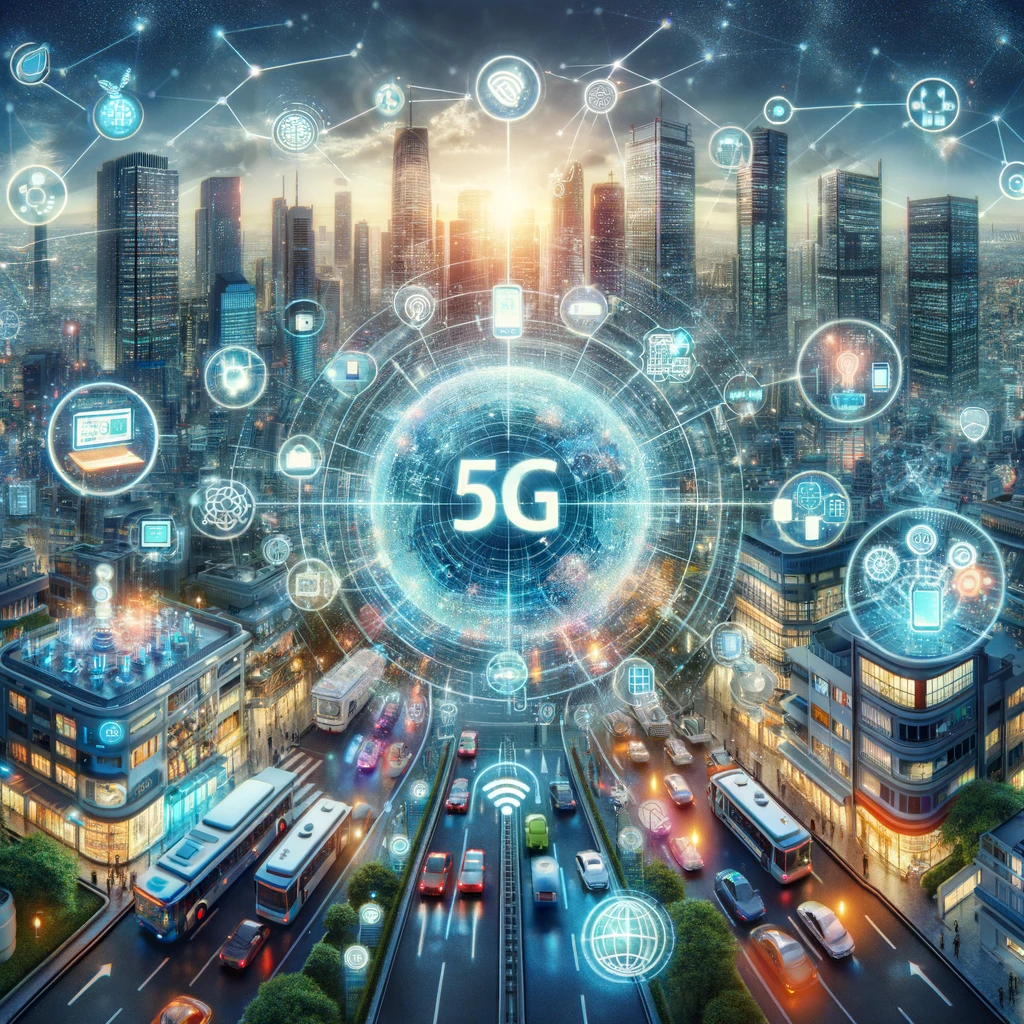In an era where connectivity is as essential as the air we breathe, the introduction of 5G technology marks a significant leap forward, especially for the Internet of Things (IoT).
This groundbreaking technology is not just about faster smartphones; it’s a catalyst for a comprehensive digital transformation that will affect everything from individual gadgets at home to the infrastructure of entire cities. Let’s explore how 5G is set to enhance the IoT landscape, its implications for India, and the advantages this technology brings to the table.
The Synergy Between 5G and IoT

The Internet of Things, a network of interconnected devices communicating without human intervention, has been gradually transforming our lives. However, the full potential of IoT has been bottlenecked by the limitations of current wireless technologies.
Enter 5G, with its promise of ultra-high speeds, almost negligible latency, and unparalleled reliability. These features enable seamless communication between devices, making the IoT more efficient, responsive, and significantly more powerful.
– Enhanced Connectivity: 5G’s ability to support a larger number of connected devices per unit area compared to its predecessors means that IoT systems can become more complex and widespread, from smart homes to intelligent city infrastructures.
– Reduced Latency: The ultra-low latency of 5G improves the responsiveness of IoT devices, essential for critical applications like remote surgeries or real-time traffic management.
– Increased Bandwidth: 5G provides the bandwidth needed for handling high volumes of data, facilitating more sophisticated IoT applications that require real-time data analysis, such as smart grids or live-streaming body cameras for law enforcement.
5G Technology in India: A Game Changer for IoT

India stands on the brink of a 5G revolution, poised to harness this technology to leapfrog into a future where digital connectivity is a cornerstone of economic and social development.
The rollout of 5G networks in India is expected to turbocharge the country’s IoT capabilities, enabling innovations such as smart agriculture, intelligent transportation systems, and telemedicine services, thereby transforming lives across urban and rural areas alike.
– Smart Agriculture: With 5G-enabled IoT, farmers can monitor soil moisture, crop health, and weather conditions in real-time, making informed decisions to increase yield and reduce waste.
– Intelligent Transportation: IoT can manage traffic flows more efficiently, reduce congestion, and enhance safety through real-time data collection and analysis, powered by 5G connectivity.
– Telemedicine: High-speed 5G networks can support remote diagnostics and consultations, making healthcare accessible in the most remote corners of the country.
Advantages of 5G Technology
The advent of 5G technology brings a multitude of benefits, significantly impacting various sectors:
– Accelerated Speed: 5G networks offer speeds up to 100 times faster than 4G, enabling quicker downloads, seamless streaming, and real-time data access.
– Enhanced Capacity: 5G can connect many more devices at once, supporting the exponential growth of IoT devices without compromising performance.
– Improved Efficiency: 5G networks are designed to be more energy-efficient, a crucial factor as IoT devices proliferate, aiming for sustainability alongside technological advancement.
Conclusion: Embracing the 5G-IoT Era
The integration of 5G technology into the IoT ecosystem heralds a new era of innovation and efficiency. As India prepares to embrace 5G, the potential for transformative change across sectors—from agriculture to healthcare, from smart cities to industrial automation—is immense.
The advantages of 5G technology, from its speed to its capacity for connecting a vast network of devices, make it a foundational element of the future digital landscape. As we stand on the cusp of this technological revolution, it’s clear that 5G and IoT together will redefine what’s possible, driving progress and prosperity in the digital age.




